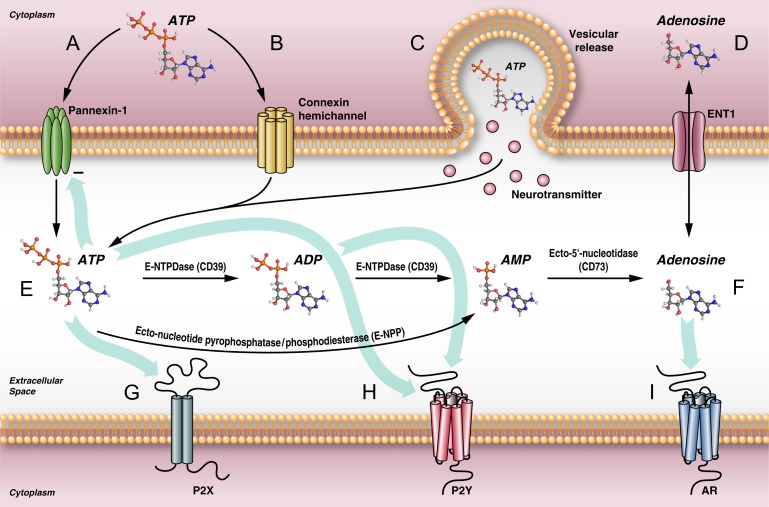Fig. 4.
Schematic representation of some of the mechanisms implicated in the release of ATP and purinergic neurotransmission in the brain. (A) Pannexin1 channels release ATP into the extracellular space, which in turn inhibits their opening (Dahl, 2015). (B) ATP can also be released from connexin hemichannels. Connexin hemichannel opening has been associated with cerebral insults and brain injury. (C) ATP is also released into the extracellular space by vesicular release along neurotransmitters, including acetylcholine, dopamine, serotonin, and norepinephrine. (D) The equilibrative nucleoside transporter type 1 (ENT1) allows adenosine to move in either direction, driven by the gradient. Alcohol is believed to inhibit ENT1 in vivo, resulting in increased adenosine in the extracellular space (Ruby et al., 2010). (E) Ecto-nucleoside triphosphate diphosphohydrolase (E-NTPDase1)/CD39 hydrolyzes ATP to ADP and ADP to AMP. Ecto-nucleotide pyrophosphatase/phosphodiesterase (E-NPP) can also hydrolyze ATP to AMP. Ecto-5’-nucleotidase/CD73 hydrolyzes adenosine monophosphate (AMP) to adenosine (Yegutkin, 2008) (F). Purinergic receptors include the ionotropic P2X (G) and metabotropic P2Y (H) receptors for ATP/ADP and (I) adenosine receptors (ARs) for adenosine.

